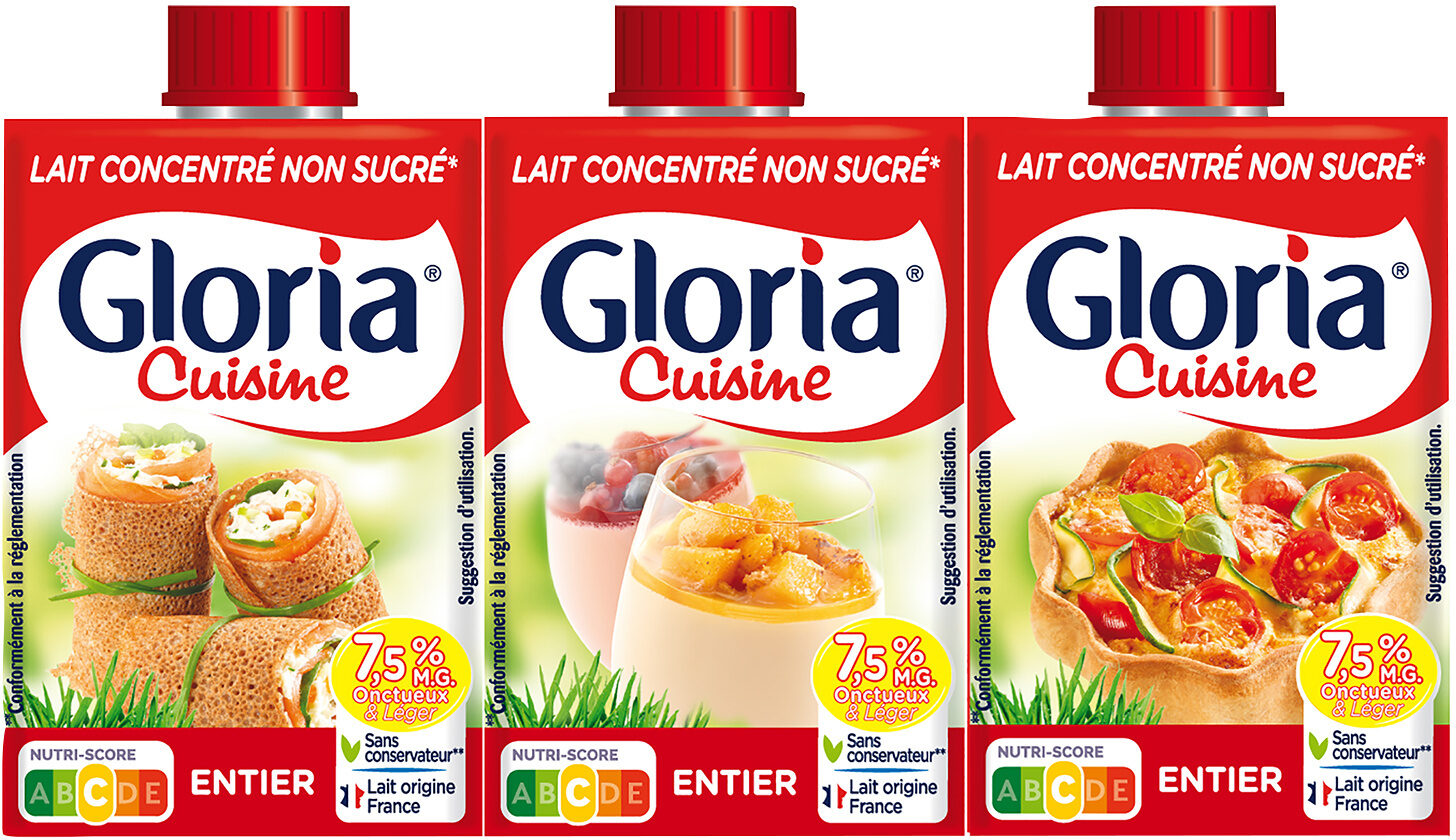GLORIA Lait concentré non sucré entier briquettes 3x20cl - Nestlé - 636 g
This product page is not complete. You can help to complete it by editing it and adding more data from the photos we have, or by taking more photos using the app for Android or iPhone/iPad. Thank you!
×
Some of the data for this product has been provided directly by the manufacturer MATERNE.
Barcode: 3033710068500 (EAN / EAN-13)
Common name: Lait concentré
Quantity: 636 g
Categories: Dairies, Milks, Homogenized milks, Evaporated milks, Evaporated milks with sugar, Evaporated milks without sugar, ESL milks, fr:Laits entiers concentrés
Labels, certifications, awards:
No preservatives, FSC, FSC Mix, Nutriscore, Nutriscore Grade C
Origin of the product and/or its ingredients: France
Traceability code: FSC-C014047
Stores: Magasins U
Countries where sold: France
Matching with your preferences
Environment
Carbon footprint
Packaging
Transportation
Other information
Preparation: Base pour préparations culinaires salées et sucrées. Lait reconstitué : ½ lait concentré + ½ eau.
Conservation conditions: Avant ouverture, se conserve à température ambiante. Après ouverture, à conserver au réfrigérateur à +4°C et à consommer dans les 72 heures.
Customer service: Gloria / MB SAS, 2 Rue Rex Combs - Chef du Pont - 50480 Sainte Mère Eglise - FRANCE
Report a problem
Data sources
The manufacturer MATERNE uses Equadis to automatically transmit data and photos for its products.
Product added on by kiliweb
Last edit of product page on by org-materne.
Product page also edited by date-limite-app, desan, ecoscore-impact-estimator, magasins-u, openfoodfacts-contributors, packbot, quechoisir, quentinbrd, roboto-app, teolemon, wolfgang8741, yuka.SDU0QUxhWUZndGNxbE04L3hERHRvY3BSM0xTWVlGaUpLck5MSVE9PQ.







